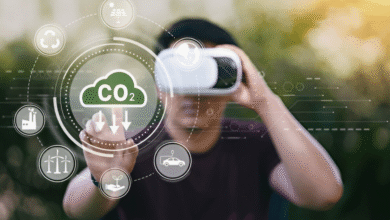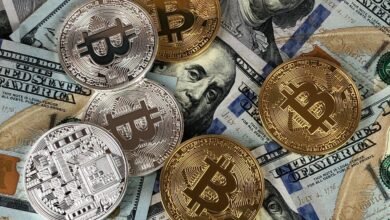Non-Fungible Tokens in 2025: The Shift from Art to Utility
NFT utility 2025 Explore how non-fungible tokens evolved from digital art to real-world applications in identity, gaming, and asset tokenization.

The era of Non-Fungible Tokens (NFTs) as purely digital art collectibles has come to an end. In 2025, NFTs have undergone a radical transformation, evolving into powerful instruments of utility across industries. What began as a speculative market for pixelated avatars and digital artworks has matured into a technology driving real-world applications from decentralized identity systems to tokenized real estate and dynamic financial assets. This shift reflects a broader blockchain revolution, where NFTs are no longer valued for scarcity alone but for their tangible functionality and integration into everyday transactions.
As the hype around NFT art fades, businesses, governments, and developers are finding innovative ways to leverage Non-Fungible Tokens for authentication, ownership tracking, and decentralized governance. The gaming industry has embraced NFTs for true digital asset ownership, while supply chains use them to combat counterfeiting. Even traditional finance is adopting tokenized NFTs as collateral for loans and insurance. This is explores how NFTs in 2025 have moved beyond speculative trading to become indispensable tools in a blockchain-powered economy.
Non-Fungible Tokens in 2025
The Evolution of NFTs
When NFTs first gained mainstream attention, they were primarily associated with digital art and profile picture projects (PFPs) like CryptoPunks and Bored Ape Yacht Club. Collectors and investors flocked to these assets, driving prices to astronomical levels. However, the speculative bubble eventually burst, leading to a market correction that forced a reevaluation of NFTs’ true purpose. By 2025, the narrative has shifted. While digital art NFTs still exist, the most impactful developments revolve around utility. Industries such as gaming, real estate, healthcare, and finance are integrating NFTs to solve real-world problems.
Key Sectors Driving NFT Utility in 2025
Decentralized Identity and Authentication
One of the most significant advancements in NFT technology is its application in digital identity. Governments and corporations are adopting NFT-based identity systems to combat fraud and streamline verification processes. Unlike traditional IDs, which are vulnerable to theft, NFT identities are stored on the blockchain, making them tamper-proof and easily verifiable.
Tokenized Real-World Assets (RWAs)
The tokenization of physical assets has gained momentum, with NFTs serving as digital certificates of ownership. High-value assets like real estate, luxury goods, and even intellectual property are being fractionalized through NFTs, allowing for broader investment opportunities. This shift democratizes access to traditionally illiquid markets.
Gaming and the Metaverse
The gaming industry continues to be a major driver of NFT adoption. In 2025, players expect true ownership of in-game items, characters, and virtual land. Blockchain-based games now allow NFTs to be traded across different platforms, creating a seamless digital economy. The metaverse, though still evolving, relies heavily on NFTs to establish verifiable ownership of virtual assets.
Supply Chain and Authenticity Verification
Counterfeit goods cost businesses billions annually. NFTs provide an immutable record of a product’s journey from manufacturer to consumer. Luxury brands, pharmaceuticals, and even agriculture sectors use NFTs to ensure authenticity and ethical sourcing.
DeFi and Financial Instruments
NFTs are increasingly integrated into Decentralized finance (DeFi). Collateralized NFT loans, yield-generating NFTs, and insurance policies tied to NFTs are becoming common. This financialization of NFTs adds another layer of utility, making them more than just collectibles.
Challenges Facing Non-Fungible Tokens
Regulatory Uncertainty and Compliance Issues
The lack of clear global regulations surrounding NFTs creates legal ambiguities for businesses and creators. Governments are still grappling with how to classify utility NFTs as securities, digital commodities, or entirely new asset classes. This uncertainty leads to compliance risks, particularly in financial applications like tokenized real estate or NFT-backed loans. Without standardized frameworks, institutional adoption may stall, leaving NFTs confined to niche use cases.
Scalability and Blockchain Limitations
Most NFT ecosystems still rely on energy-intensive proof-of-work blockchains or face congestion on proof-of-stake networks. High gas fees and slow transaction speeds during peak times make NFTs impractical for mass-market utility applications. While layer-2 solutions and alternative chains have emerged, fragmentation across platforms threatens interoperability a core requirement for assets like cross-game NFTs or decentralized identity systems.
Environmental Sustainability Concerns
Despite improvements, the carbon footprint of blockchain networks remains a public relations hurdle for NFT adoption. Enterprises and environmentally conscious consumers demand greener alternatives, pushing developers toward energy-efficient consensus mechanisms. However, transitioning established NFT projects to sustainable frameworks without disrupting functionality presents technical and economic challenges.
User Experience and Mainstream Accessibility
The complexity of managing crypto wallets, private keys, and gas fees continues to alienate non-technical users. For NFTs to achieve true utility in sectors like healthcare or government IDs, the onboarding process must become as seamless as traditional apps. Additionally, the absence of robust customer support and fraud protection in decentralized systems deters risk-averse organizations from NFT integration.
Market Saturation and Value Perception
The oversupply of low-utility NFTs from the art boom era has led to consumer skepticism. Distinguishing genuinely valuable utility NFTs from speculative assets requires education and transparent metrics. Brands leveraging NFTs for loyalty programs or certifications must combat “NFT fatigue” by demonstrating clear, unique benefits over conventional digital solutions.
Security Risks and Smart Contract Vulnerabilities
NFT infrastructure remains a target for hackers, with exploits in smart contracts leading to high-profile thefts. As NFTs take on more critical roles (e.g., academic credentials or property deeds), the consequences of breaches grow severe. The industry needs standardized security audits and insurance products to mitigate risks, especially in regulated sectors like finance and healthcare.
Future Outlook for Non-Fungible Tokens
Bridging the Digital-Physical Divide
One of the most pressing challenges lies in creating seamless integration between NFT-based systems and real-world applications. While tokenized real estate and supply chain tracking show promise, most implementations remain experimental. The development of standardized IoT interfaces and verifiable physical anchors (like NFC chips linked to NFTs) will be crucial for bridging this gap. Without robust solutions, many utility NFTs risk remaining theoretical concepts rather than practical tools.
Solving the Liquidity Paradox
The NFT market faces a fundamental contradiction – while touted as unique digital assets, their true utility often depends on fungibility and liquidity. Secondary markets for utility NFTs (like fractionalized real estate or carbon credits) remain illiquid compared to traditional financial instruments. Innovative solutions such as NFT-backed stablecoins and automated market makers specifically designed for semi-fungible tokens may help resolve this tension.
Read More: Beyond Bitcoin: 7 Real Blockchain Uses Changing the World
Conclusion
The journey of Non-Fungible Tokens (NFTs) from digital art novelties to functional assets marks a pivotal shift in blockchain’s evolution. In 2025, NFTs have proven their worth beyond speculation, becoming critical components in identity verification, asset tokenization, and decentralized ecosystems. This transformation underscores a fundamental truth value in the digital age is no longer defined by scarcity alone, but by utility and real-world applicability. As industries continue integrating NFTs into their infrastructures, these tokens are quietly revolutionizing how we authenticate ownership, trade assets, and interact with digital economies.
Looking ahead, the future of Non-Fungible Tokens hinges on solving remaining challenges scalability, regulation, and mainstream adoption while expanding into new frontiers like AI-powered dynamic NFTs and cross-chain interoperability. The art market will always have its place, but the true legacy of NFTs lies in their ability to bridge physical and digital value. As we move deeper into the decade, one thing is clear: NFTs are no longer just collectibles, but indispensable tools shaping the next era of the internet one built on verifiable ownership and decentralized utility.
FAQs
What are utility NFTs?
Utility NFTs are non-fungible tokens designed to provide real-world functions beyond collectibility, such as access rights, identity verification, or asset ownership.
How are Non-Fungible Tokens used in gaming?
Non-Fungible Tokens in gaming represent in-game assets (characters, skins, land) that players truly own, allowing them to trade or use these items across different platforms.
Can Non-Fungible Tokens be used for identity verification?
Yes, Non-Fungible Tokens enable secure, tamper-proof digital identities stored on the blockchain, reducing fraud and simplifying authentication processes.
What industries benefit most from utility Non-Fungible Tokens?
Gaming, real estate, supply chain, finance, and healthcare are among the top industries leveraging NFTs for practical applications.
Are Non-Fungible Tokens still relevant in 2025?
Absolutely Non-Fungible Tokens have evolved from speculative assets to functional tools, ensuring their continued relevance across multiple sectors.












2 Comments